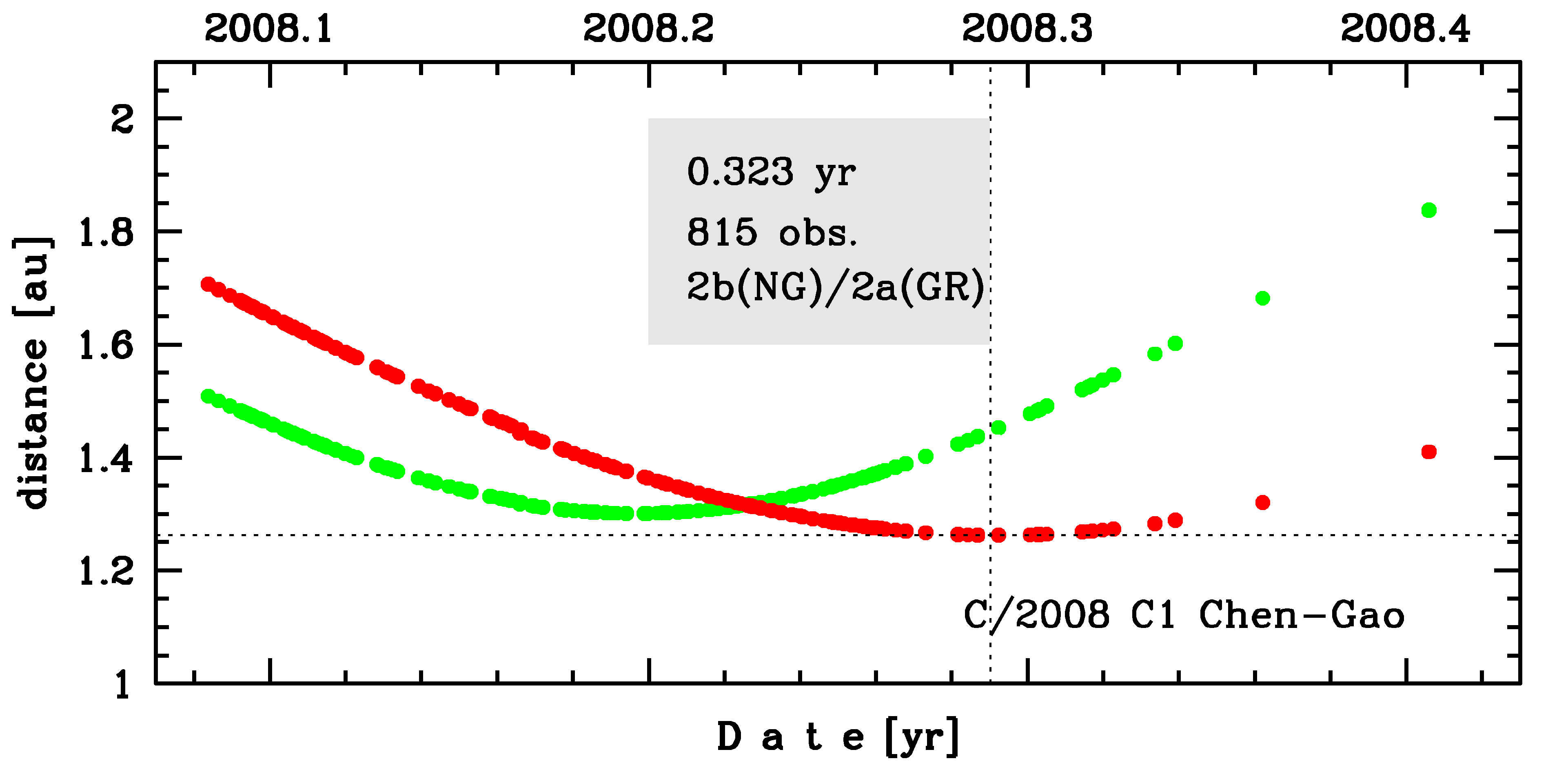C/2008 C1 Chen-Gao
more info
Comet C/2008 C1 was discovered on 1 February 2008 by Tao Chen (Suzhou City, Jiangsu province, China) and Xing Gao (Urumqi, Xinjiang province, China) at Xingming Observatory (Mt. Nanshan); that is about 2.5 months before its perihelion passage. A few pre-discovery images taken on 30 and 31 January at Xingming Observatory were next found. The comet was observed until 28 May 2008.
Comet had its closest approach to the Earth on 13 March 2008 (1.301 au), about 1.5 month after its discovery.
Solutions given here are based on data spanning over 0.323 yr in a range of heliocentric distances: 1.71 au – 1.262 au (perihelion) – 1.41 au. The non-gravitational solution was chosen as preferred orbit; however, uncertainties of NG parameters are large.
This comet suffers moderate planetary perturbations during its passage through the planetary system; these perturbations lead to more tight future orbit (see future barycentric orbits).
See also Królikowska and Dybczyński 2013 and Królikowska 2020.
Comet had its closest approach to the Earth on 13 March 2008 (1.301 au), about 1.5 month after its discovery.
Solutions given here are based on data spanning over 0.323 yr in a range of heliocentric distances: 1.71 au – 1.262 au (perihelion) – 1.41 au. The non-gravitational solution was chosen as preferred orbit; however, uncertainties of NG parameters are large.
This comet suffers moderate planetary perturbations during its passage through the planetary system; these perturbations lead to more tight future orbit (see future barycentric orbits).
See also Królikowska and Dybczyński 2013 and Królikowska 2020.
| solution description | ||
|---|---|---|
| number of observations | 802 | |
| data interval | 2008 01 30 – 2008 05 28 | |
| data type | almost all measurements before perihelion (PRE++) | |
| data arc selection | entire data set (STD) | |
| range of heliocentric distances | 1.71 au – 1.26 au (perihelion) – 1.41 au | |
| detectability of NG effects in the comet's motion | comet with determinable NG~orbit | |
| type of model of motion | GR - gravitational orbit | |
| data weighting | YES | |
| number of residuals | 1544 | |
| RMS [arcseconds] | 0.36 | |
| orbit quality class | 2a | |
| orbital elements (heliocentric ecliptic J2000) | ||
|---|---|---|
| Epoch | 2008 04 04 | |
| perihelion date | 2008 04 16.85046143 | ± 0.00031603 |
| perihelion distance [au] | 1.26235105 | ± 0.00000365 |
| eccentricity | 1.00001636 | ± 0.00001468 |
| argument of perihelion [°] | 180.927721 | ± 0.000308 |
| ascending node [°] | 307.782182 | ± 0.000150 |
| inclination [°] | 61.784754 | ± 0.000068 |
| reciprocal semi-major axis [10-6 au-1] | -12.96 | ± 11.63 |
